Rayen Castle: Iran's Ancient Desert Fortress
Rayen Castle, located in the town of Rayen in Kerman Province, Iran, is a remarkable example of ancient Persian architecture.
Positioned about 100 kilometers south of Kerman city, this sprawling adobe structure is one of the best-preserved mudbrick fortresses in the world. Known as the Rayen Citadel, the castle has endured the test of time despite its desert setting and the region's historical upheavals.
Built on the foothills of the Hezar Mountains, the castle's commanding presence once played a crucial role in defending the local population. Covering an area of 20,000 square meters, Rayen Castle’s high walls and numerous watchtowers made it a powerful defensive structure, strategically important in ancient times. Today, it offers visitors a unique glimpse into Iran’s rich architectural past and is an ideal destination for those interested in history and photography.
The intricate layout of the fortress, including residential areas, stables, and courtyards, draws visitors from around the world, making it a must-see attraction for tourists visiting Kerman Province. So if you're planning to travel to Kerman with one of Eavar Tours, you should consider visiting this mysterious, historic castle.
Historical Background of Rayen Castle
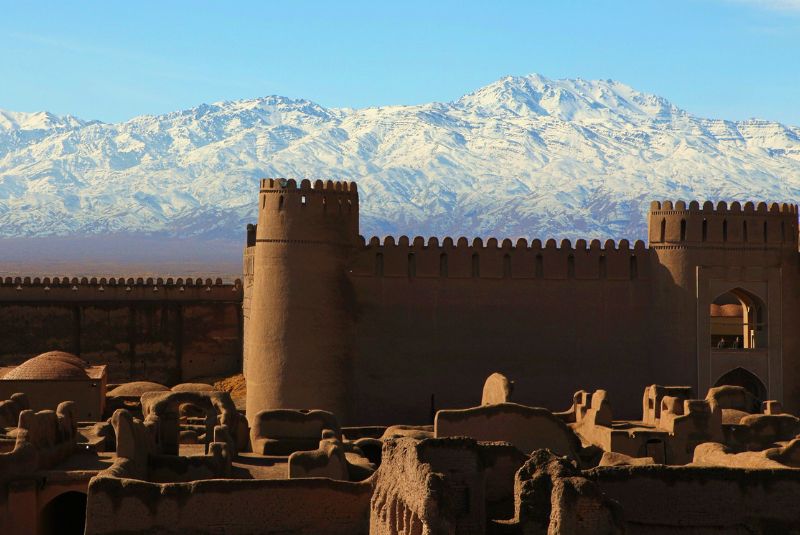
Rayen Castle dates back to the Sassanian era (224–651 AD), making it a structure of significant historical importance. Its origins are believed to be closely tied to the military and political dynamics of the region, functioning primarily as a stronghold that protected the local community from potential invaders. During the Sassanian period, the castle was a key military outpost, serving as a protective barrier for the inhabitants of Rayen and the surrounding areas.
In the centuries following the rise of Islam in Iran, Rayen Castle continued to serve an important defensive role. Its strategic location on ancient trade routes, connecting the Persian Gulf to Central Asia, made it a vital point for commerce and military presence. The castle's defensive walls, watchtowers, and well-fortified gates helped protect Rayen against attacks, preserving the prosperity of the local economy during this time.

Significant events in Rayen Castle’s history include its use as a refuge during tribal conflicts and periods of political instability in Iran. Over the centuries, the structure also became a center for local governance and a symbol of regional power.
As the centuries passed and new military technologies developed, the castle’s role as a defensive structure diminished. Rayen Castle was gradually abandoned, particularly in the 19th century, as more modern urban centers developed. However, efforts to preserve and restore the site began in the 20th century, ensuring its survival as an architectural and cultural site. Today, Rayen Castle stands as a powerful reminder of Iran's past and attracts visitors interested in exploring the legacy of ancient fortifications.
| Related: Iran's Beautiful Castles - Top 20 Historical Fortresses You Must Visit
Rayen Castle Architecture and Design

Rayen Castle’s architecture reflects the practical and aesthetic principles of ancient desert fortifications, particularly in its use of adobe and mudbrick materials. These natural materials, widely available in the region, were chosen for their ability to withstand the harsh desert climate. The thick adobe walls provide insulation against the extreme heat of the day and the cool nights, a critical feature in the desert environment. Constructed with compacted mud and straw, the walls have proven durable enough to last for centuries despite erosion and occasional earthquakes.
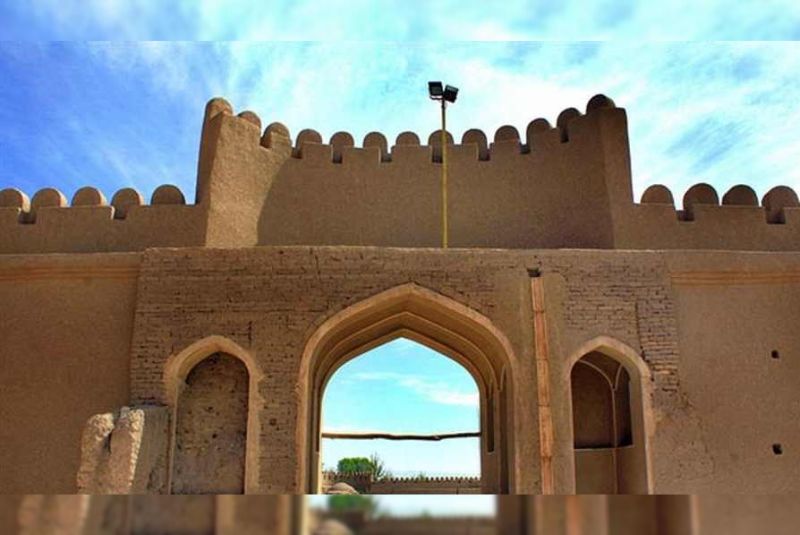
The construction techniques used in Rayen Castle involve layering mudbrick to form thick walls that are not only strong but also resistant to the natural wear caused by desert winds. This method of construction allowed the builders to create a structure that could endure both time and weather, making it one of the most well-preserved examples of traditional desert architecture in Iran.
The castle’s layout is typical of a fortified Persian settlement, with distinct areas designated for different social classes. The residential quarters for commoners and soldiers were located closer to the outer walls, while the inner areas, reserved for nobility and higher officials, were more spacious and featured more elaborate designs. This hierarchical separation was a key element of traditional Persian architecture, ensuring that the castle’s layout mirrored the social structure of the time.
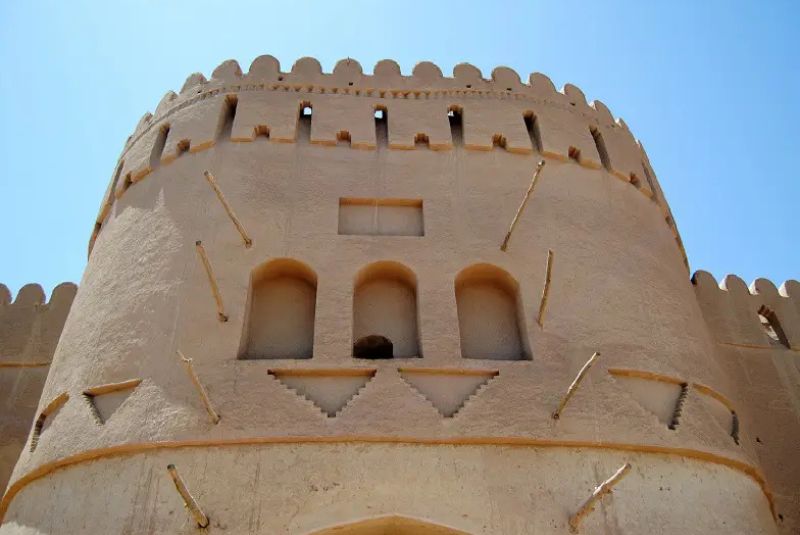
Key features of the castle include its towering defensive walls, which are nearly 10 meters high, and the numerous watchtowers strategically placed to provide a full view of the surrounding area. These watchtowers, along with heavily fortified gateways, helped to make the castle impenetrable to invaders. The central courtyard served as a communal area and was an important feature in Sassanian-influenced architecture, allowing for public gatherings and ceremonies.

Modern-day preservation efforts have focused on maintaining the authenticity of Rayen Castle’s original design. Although it has undergone some restoration work, particularly after natural wear, the goal has always been to retain the original materials and techniques as much as possible. This careful restoration allows visitors today to experience the castle much as it would have appeared centuries ago, while safeguarding its structure for future generations.
| Discover: Arg-e Bam - The Fascinating Citadel of Ancient Persia
Exploring Rayen Castle
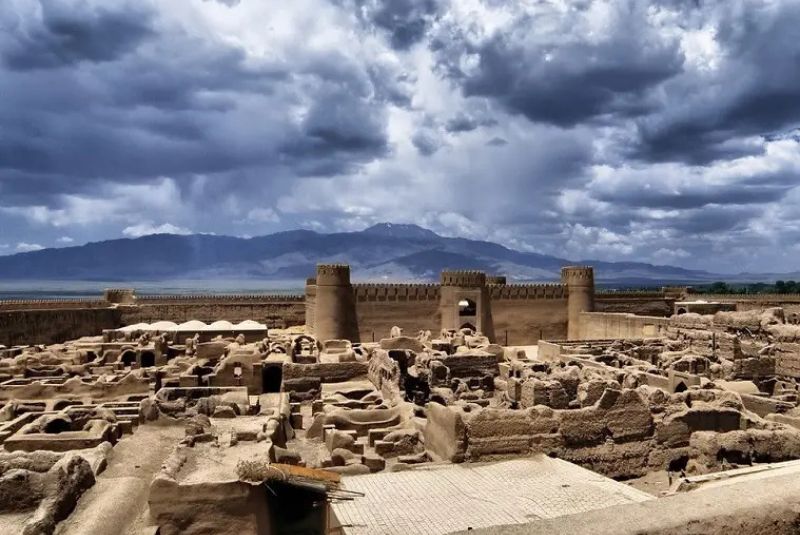
Rayen Castle is located about 100 kilometers south of Kerman, and getting there is relatively straightforward. Travelers can hire a private car or taxi from Kerman, which typically takes about 90 minutes. Organized tours are also available, many of which include stops at nearby attractions such as Shazdeh Mahan Garden. Public transportation options are limited, so renting a car or booking a guided tour is the most convenient way to reach the site.
Opening Hours & Ticket Information
Rayen Castle is open to visitors year-round. The opening hours are typically from 8:00 AM to 5:00 PM, but it’s best to check ahead of time as hours may vary slightly depending on the season. The entrance fee is modest, making it an affordable destination for both local and international tourists. Tickets can be purchased at the gate upon arrival.
| Suggestion: What is the Currency of Iran?
What to Expect During the Visit
Visitors should plan to spend at least 1.5 to 2 hours exploring the castle. The expansive layout includes various areas such as residential quarters, the central courtyard, and the watchtowers, all of which provide insight into the castle’s former functions. There are informational signs and occasional on-site guides who can explain the history and architecture in more detail. Parking is available near the site, and basic facilities such as restrooms and small rest areas are also provided.
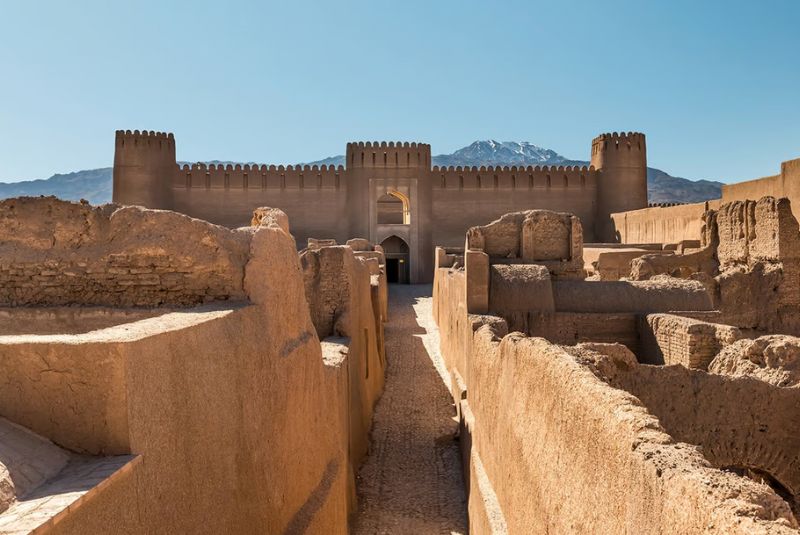
Photography Tips
For photography enthusiasts, the best spots for panoramic views are from the higher points of the watchtowers or along the defensive walls. The castle’s adobe walls and surrounding mountain views create striking contrasts, especially during the early morning or late afternoon when the sunlight casts dramatic shadows on the structure.
Nearby Amenities
For those looking to stay overnight, accommodations are available in the nearby town of Rayen or in Kerman. There are also a few local restaurants in Rayen that serve traditional Iranian food, offering visitors a chance to enjoy local cuisine before or after their visit to the castle. For more extensive dining and lodging options, Kerman offers a wider selection.
Cultural Significance of Rayen Castle
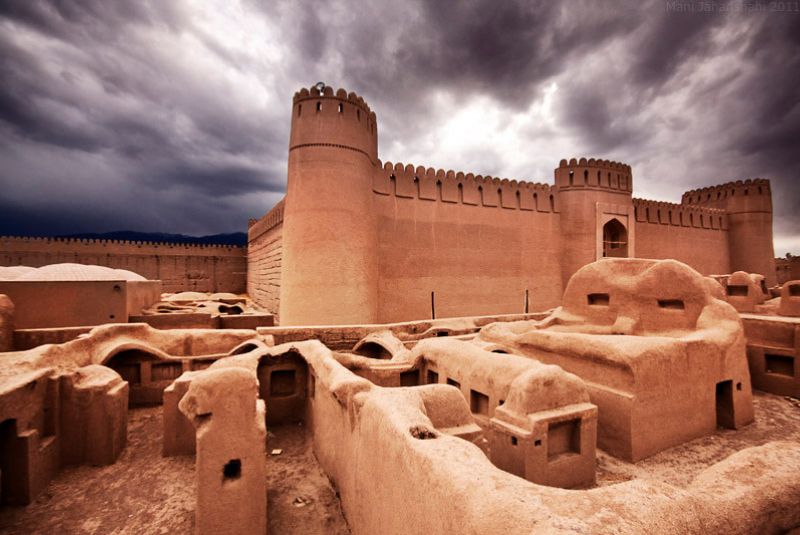
Rayen Castle holds deep cultural significance for the region of Kerman and Iran as a whole. As one of the largest and best-preserved adobe structures in the country, it represents the skill and ingenuity of local craftsmen who mastered the techniques of mudbrick construction, vital for desert climates. The castle is a key example of Persian defensive architecture, reflecting centuries of knowledge about fortification and urban planning. Its layout, with separate areas for the elite and common residents, showcases the social structure of the time and the practical need for security in a volatile region.
The castle also connects Rayen with other important historical sites in Kerman Province. For instance, it shares architectural and historical themes with the nearby Bam Citadel, another prominent adobe structure. Additionally, its proximity to landmarks such as Shazdeh Mahan Garden and the Ganjali Khan Complex ties Rayen Castle to the broader cultural and architectural legacy of the region. Together, these sites create a cohesive narrative of Kerman’s historical importance as a center of trade, governance, and military strategy throughout Iran's history.
Best Time to Visit Rayen Castle
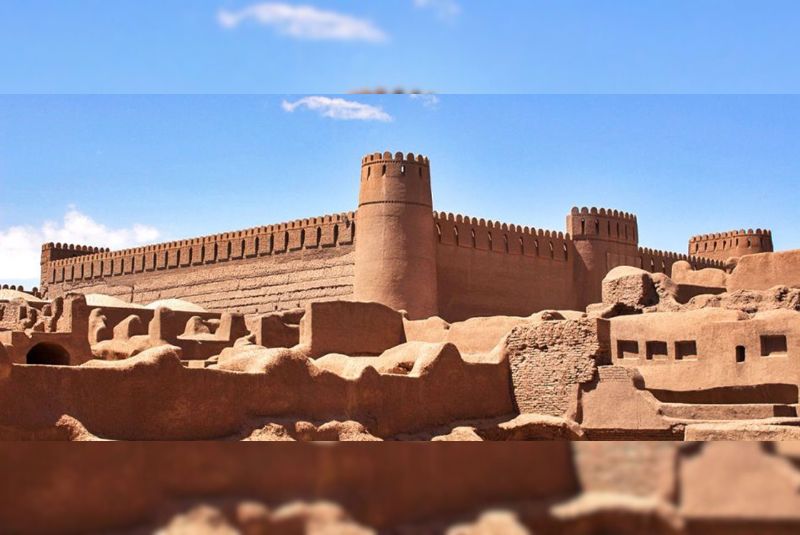
The ideal time to visit Rayen Castle is during the spring (March to May) and autumn (September to November) when the weather is mild. During these seasons, daytime temperatures are comfortable, making it easier to explore the site without the intense heat of summer or the colder desert nights of winter.
Throughout the year, the region experiences a typical desert climate, with hot summers and cool winters. Summer temperatures can exceed 40°C (104°F), while winter temperatures can drop close to freezing at night. To avoid extreme weather, plan your visit during the spring or fall.
For the best light and fewer crowds, it’s recommended to visit early in the morning or late in the afternoon. These times offer softer, more diffused light, perfect for capturing the dramatic contours of the castle and its surroundings, while also avoiding the midday heat.
Rayen Castle Nearby Attractions
Exploring Rayen Castle can be part of a broader travel experience in Kerman Province, where several other remarkable attractions await visitors. Each offers a unique insight into Persian culture, history, and architecture, ensuring a well-rounded trip.
Shazdeh Mahan Garden (Bagh-e Shazdeh)
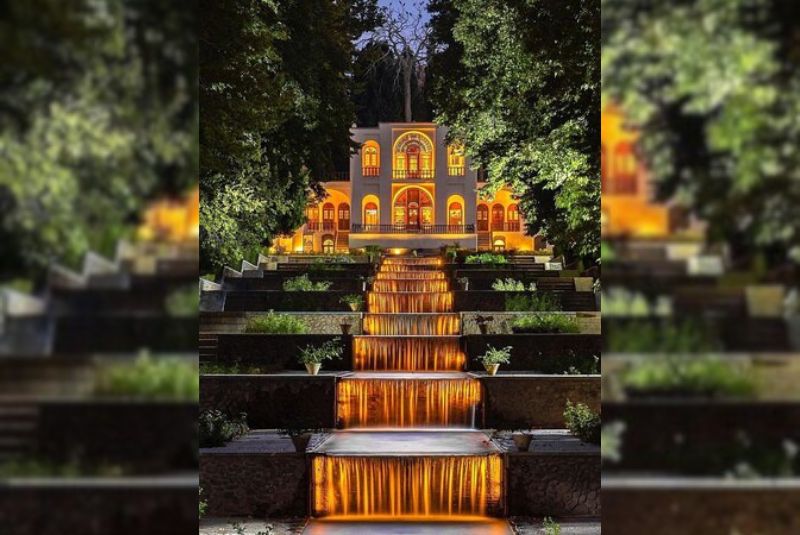
Located near the town of Mahan, about 70 km from Rayen Castle, Shazdeh Mahan Garden is an exquisite example of a Persian garden. Set against the barren backdrop of the desert, this terraced garden features a series of pools, fountains, and lush greenery that create an oasis-like effect. The garden’s design incorporates flowing water, a symbol of life in Persian culture, which cascades down the terraces, giving the space a serene atmosphere. It’s a perfect stop for travelers interested in Persian landscaping and the contrast between desert and cultivated spaces.
Mahan’s Mausoleum of Shah Nematollah Vali
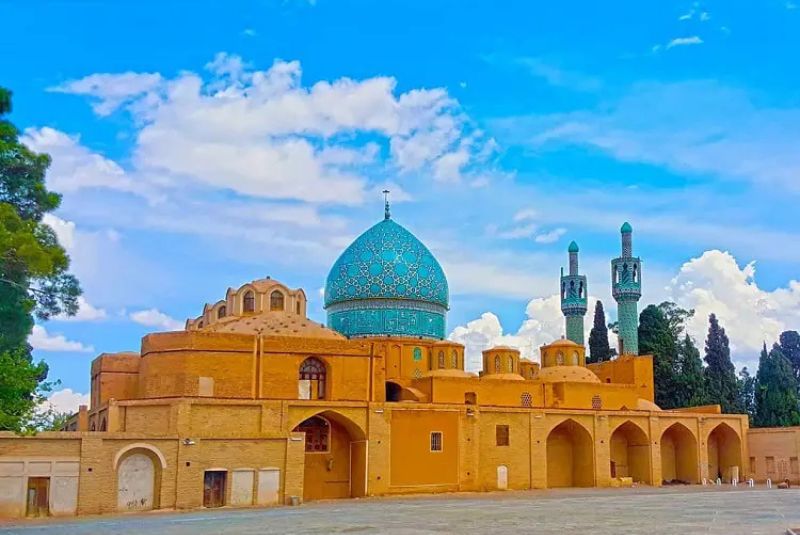
Also located in Mahan, the Mausoleum of Shah Nematollah Vali is a historic Sufi shrine dedicated to the 14th-century poet and mystic. The site is known for its blue-tiled domes, expansive courtyards, and peaceful ambiance, making it a center for spiritual reflection and Sufi gatherings. Visitors can enjoy the tranquil atmosphere while exploring the stunning architectural details of this important religious site.
Ganjali Khan Complex in Kerman
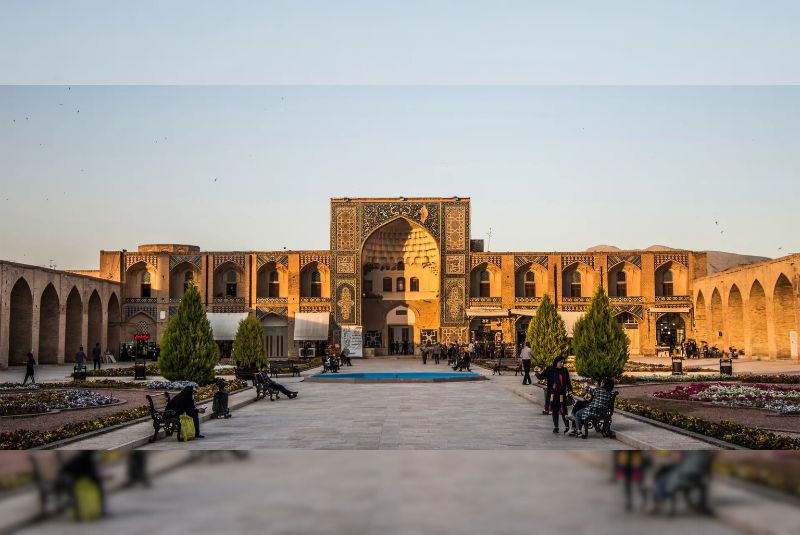
Situated in the heart of Kerman city, the Ganjali Khan Complex is a masterpiece of Safavid architecture, dating back to the 17th century. The complex includes a traditional bazaar, a beautifully decorated bathhouse, a mosque, and a caravanserai. The bathhouse (hammam) is particularly well-known for its intricate tile work and murals. The bustling bazaar offers a chance to shop for local goods and handicrafts, providing a vibrant cultural experience.
Kerman’s Jameh Mosque
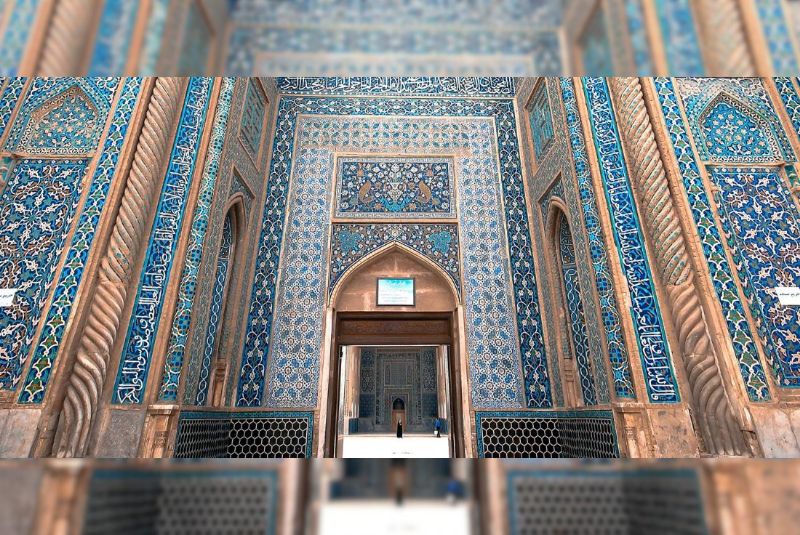
One of the largest and most important mosques in Kerman, the Jameh Mosque dates back to the 14th century. Its grand courtyard, ornate tile work, and impressive domes are classic examples of Persian mosque architecture. The mosque is still in use today, providing visitors with a glimpse into the spiritual and communal life of the local population.
Kerman Desert and Kaluts (Lut Desert)

About 140 km from Rayen, the Lut Desert, also known as the Kaluts, is a UNESCO World Heritage Site and one of the most striking desert landscapes in the world. Known for its towering rock formations, which have been shaped by wind and erosion, the Kaluts are a popular destination for trekking and desert photography. The vast, otherworldly terrain offers a stark contrast to the green spaces of Shazdeh Garden and provides adventurers with a unique outdoor experience.
| Related: Shahdad's Kalut - The Hottest Place on Earth
Tips for Visiting Rayen and Kerman
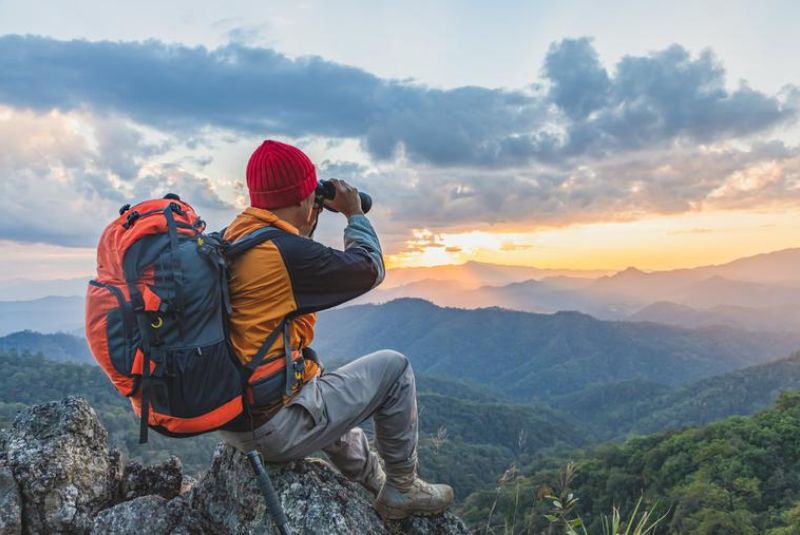
What to Pack
Due to the desert climate, it’s essential to bring sunscreen, a hat, and plenty of water. Comfortable walking shoes are also recommended, especially when exploring Rayen Castle’s vast grounds and nearby desert attractions. Lightweight clothing is advisable during the hotter months, while a jacket may be necessary during cooler evenings in the autumn and winter.
Safety and Etiquette
Visitors should respect local customs, particularly when visiting religious sites such as the Mausoleum of Shah Nematollah Vali. Modest clothing is appreciated, especially for women, and it's important to remove shoes when entering mosques. Additionally, be mindful of the heat, staying hydrated throughout your visit, and using sun protection.
Language and Communication
While Farsi is the official language, many locals in Kerman and around major tourist sites may have some knowledge of English. Learning a few basic Farsi phrases, such as greetings and polite expressions, can go a long way in communicating with locals. Guides or English-speaking staff are often available at major attractions like Rayen Castle and the Ganjali Khan Complex.
Final Takeaway
Rayen Castle is a must-visit destination for anyone interested in Iran’s rich history, stunning architecture, and unique desert landscapes. As one of the best-preserved adobe structures in the world, it provides a fascinating window into ancient Persian life and the architectural techniques that have withstood the test of time.
Share your story!
Comment below and let us know about your Experience.
Your story inspires others!


Comment
Leave a Comment